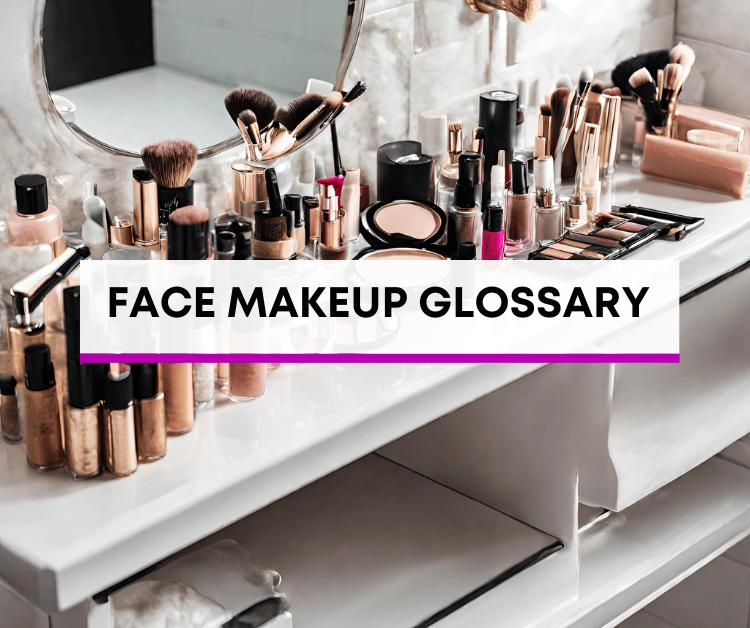In the world of skincare, understanding your skin type is like having a secret recipe for a healthy and glowing complexion.
But what if your skin seems like a mix of two different ingredients, like dryness and oiliness? That’s where dry combination skin steps into the picture.
If you’ve ever been puzzled by this particular skin type, don’t worry; you’re not alone.
We’re here to demystify it.
In this blog post, we’ll take a closer look at dry combination skin and break down three simple signs that will help you confidently identify if it’s your skin type.
So, let’s dive into the world of skincare and decode the secrets of dry combination skin.
What is Dry Combination Skin?

Dry combination skin is like a delicate dance between different skin types, combining both dry and oily characteristics.
Picture this: you might have those dry, flaky patches, often around your cheeks or jawline, making your skin feel tight and look a bit lackluster.
*As an Amazon Associate, we earn from qualifying purchases at no additional cost to you.
Most of the skin issues within this skin type tend to be tied to dryness.
But then, there’s the T-zone – your forehead, nose, and chin – where things get a bit shinier, with enlarged pores and makeup that doesn’t always cooperate.
And don’t forget, your skin can change its tune with the seasons, getting drier in the cold months and oilier when the sun’s out.
Highlights:
- Dry combination skin is a blend of dry and oily traits, with most skin issues related to dryness.
- It involves dry, flaky patches, especially around the cheeks and jawline.
- The T-zone (forehead, nose, and chin) can be oilier, with shine and makeup challenges.
- It’s a skin type that can shift with the seasons, going drier in winter and oilier in summer.
3 Dry Combination Skin Characteristics
Understanding your skin type is the first step to effective skincare, and for those with dry combination skin, there are three key characteristics to recognize:
Uneven Texture or Tightness: Dry combination skin often displays dry, flaky patches, and/or tightness typically around the cheeks and jawline.
Oily T-Zone: The T-zone, which includes the forehead, nose, and chin, tends to be oilier, with shine and enlarged pores.
Seasonal Variations: This skin type can change with the seasons, becoming drier in colder months and oilier in warmer weather.
1. Uneven Texture or Tightness
Identifying uneven skin texture and tightness is an essential aspect of recognizing dry combination skin. Here’s how to spot them:
Texture Check: Gently glide your fingers across your face, paying attention to how your skin feels. If you notice rough or bumpy patches, especially around the cheeks or jawline, it’s a sign of uneven skin texture.
Visual Examination: Look closely in the mirror, particularly under good lighting. Dry patches often appear slightly flaky, and you may notice areas that seem a bit redder or irritated. These visual cues are indicative of uneven skin texture.
Sensation of Tightness: Pay attention to how your skin feels throughout the day. If certain areas, especially around the cheeks and jawline, feel tight or somewhat uncomfortable, it’s a telltale sign of tightness associated with dry combination skin.
By being attuned to both how your skin feels and how it appears visually, you can effectively spot uneven skin texture and tightness, which are key indicators of dry combination skin.
2. Oily T-Zone
Spotting an oily T-zone is a straightforward process. Here’s how to identify it:
Visual Shine: Take a look at your face in the mirror, especially around the central area comprising your forehead, nose, and chin. If you notice a noticeable shine or a dewy appearance on these parts, that’s a clear sign of an oily T-zone.
Enlarged Pores: Another characteristic of an oily T-zone is the presence of enlarged pores. Observe the size of the pores on your forehead, nose, and chin; if they appear larger than the pores on the rest of your face, it’s a strong indication of oiliness.
Makeup Behavior: When you apply makeup, pay attention to how it behaves in the T-zone area. If foundation or other products tend to slide off more quickly or require frequent touch-ups in this region, it’s likely due to the excess oil.
- Skin Feel: Gently touch your forehead, nose, and chin with your fingers. If they feel greasy or oily compared to the rest of your face, that’s a clear indication of an oily T-zone.
3. Seasonal Skin Changes
Your skin can be a bit like a chameleon, changing with the seasons. Here’s how to spot those seasonal variations:
Winter Dryness: When winter rolls around, pay attention to how your skin feels. If you notice it becoming drier, with rough patches and that tight sensation, it’s like your skin saying, “Hello, it’s winter!” Dry combination skin tends to lean more towards the dry side during colder months.
Summer Shine: As the temperature climbs, watch for a different kind of change. Check out your T-zone, especially your forehead, nose, and chin. If they start looking shinier than usual, with larger pores and makeup not behaving as it should, that’s your skin’s way of saying, “Summer’s here!” Warmer weather often makes the oily T-zone more prominent.
Patience Pays Off: Keep in mind that these changes might not happen overnight. It can take a little time for your skin to adapt to shifting weather conditions, so be patient with the process.
So, by noticing these seasonal shifts in your skin, you can tweak your skincare routine to give your dry combination skin the love and care it needs all year round.
Conclusion: Dry Combination Skin
In conclusion, dry combination skin, with its uneven texture, oily T-zone, and seasonal shifts, holds its own charm. Understanding these traits is your roadmap to a healthier complexion.
By tailoring your skincare routine to its changing needs, you’ll achieve the perfect balance of moisture and oil control.
As you embrace and adapt to your dry combination skin, you’ll not only glow but also connect with your skin’s remarkable resilience.
So, with confidence, embark on this skincare journey – the key to unlocking your unique beauty.



